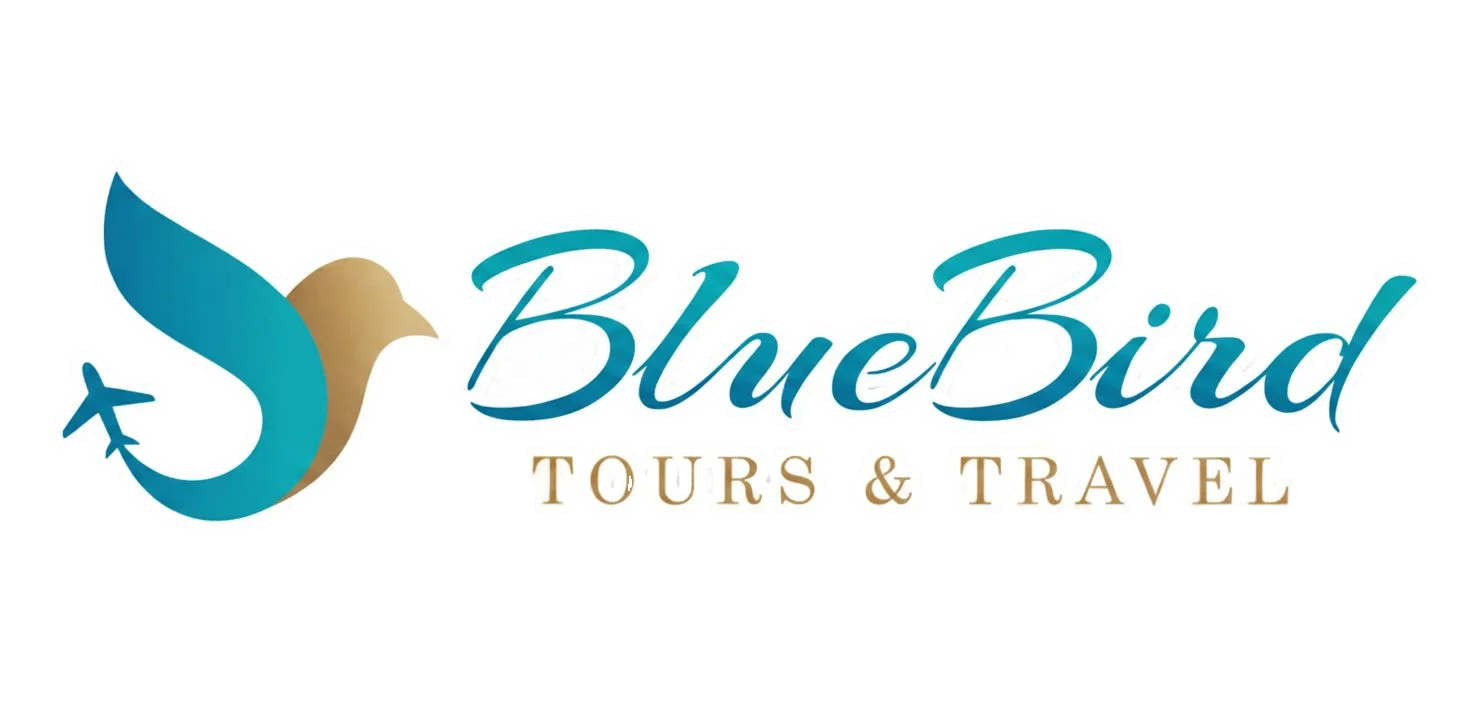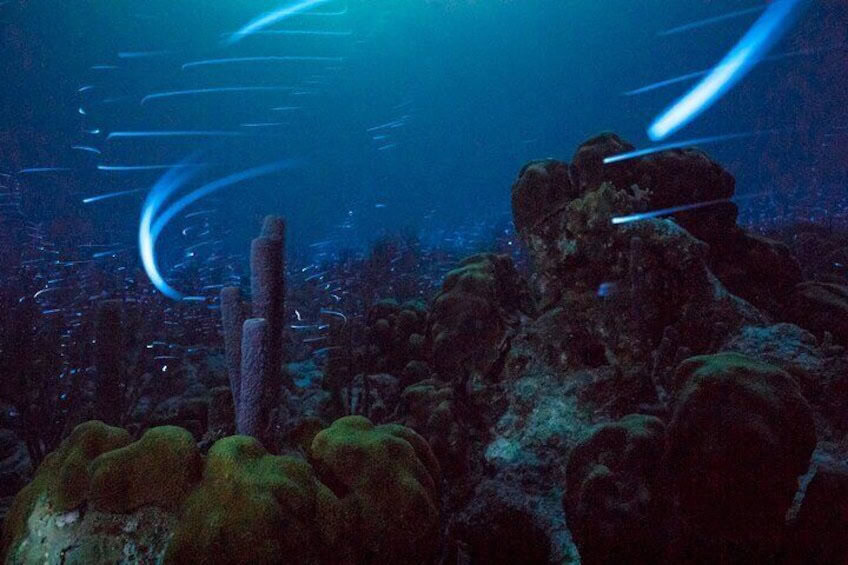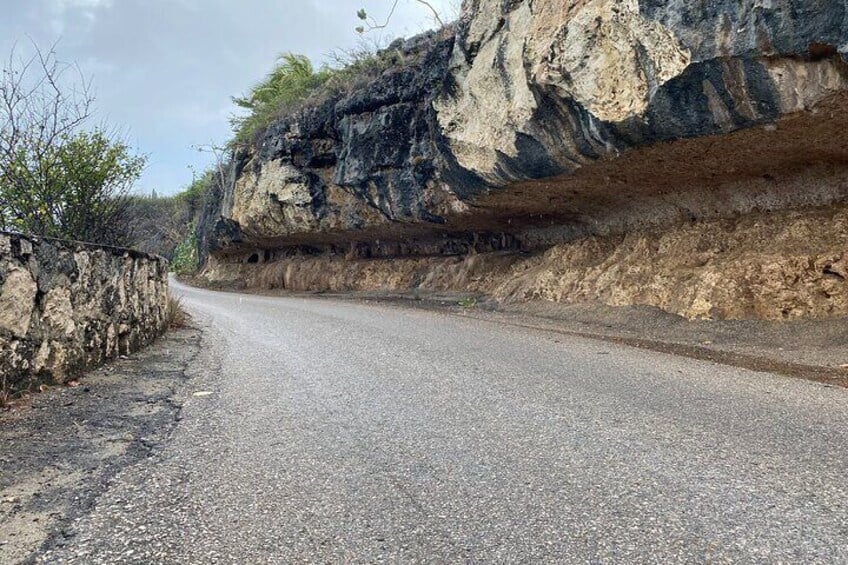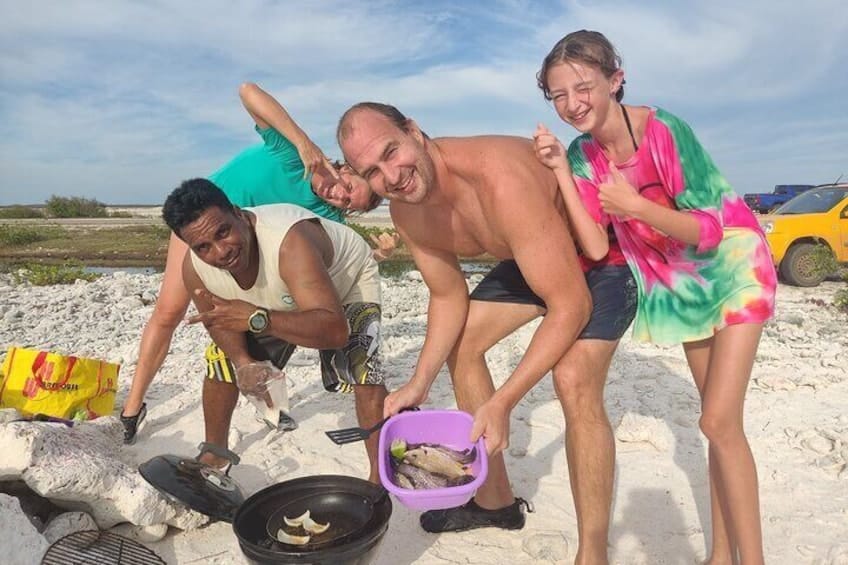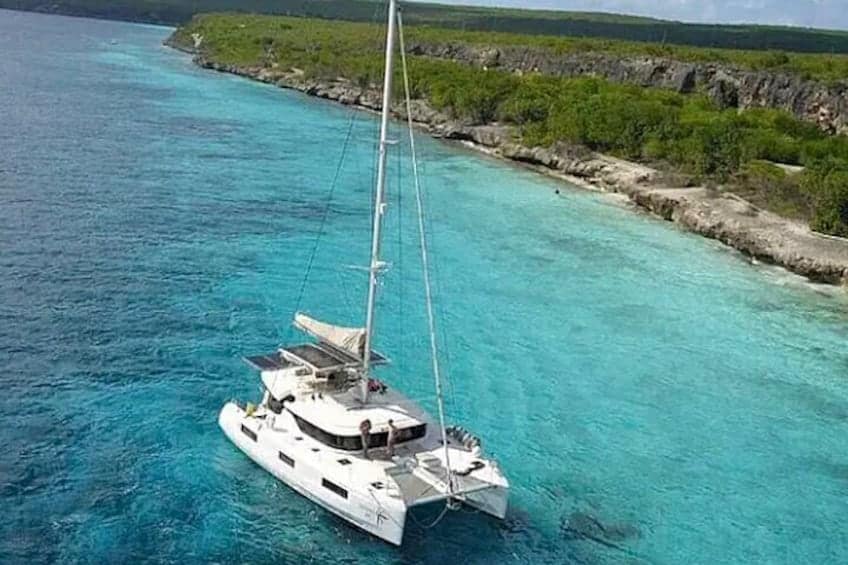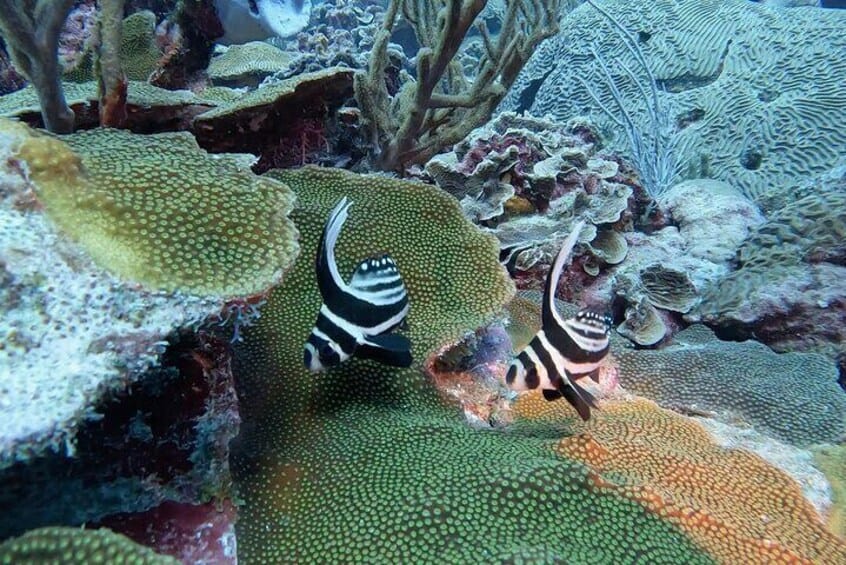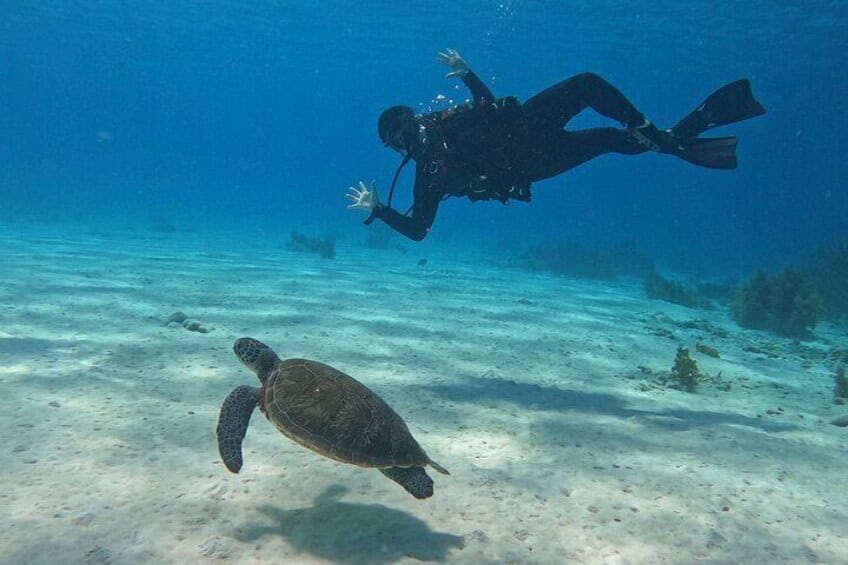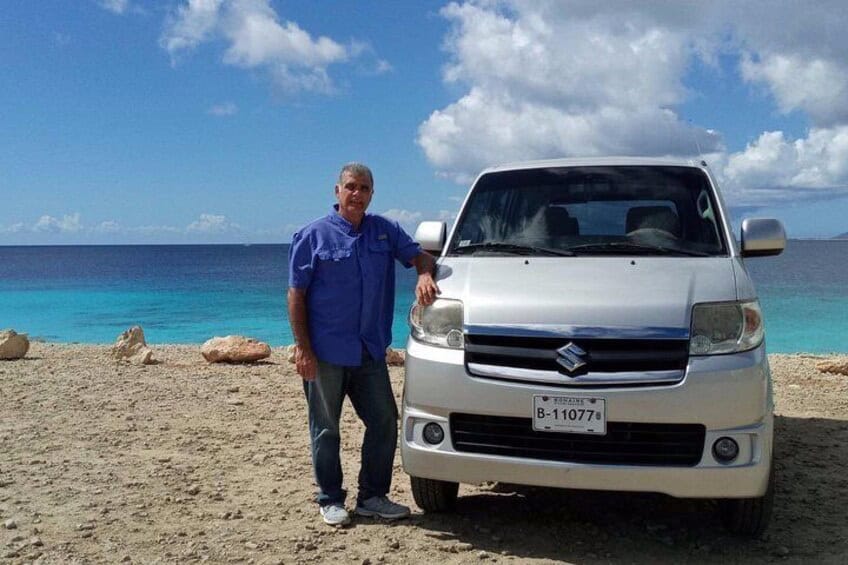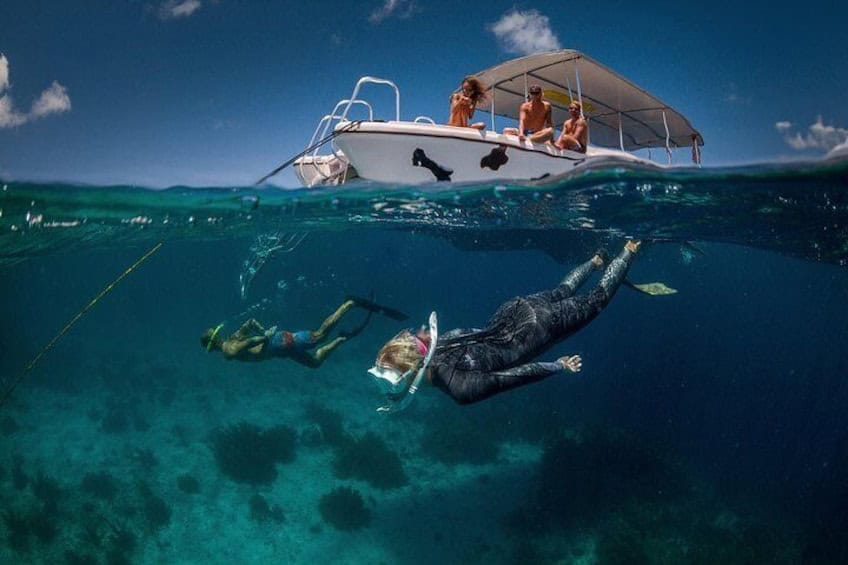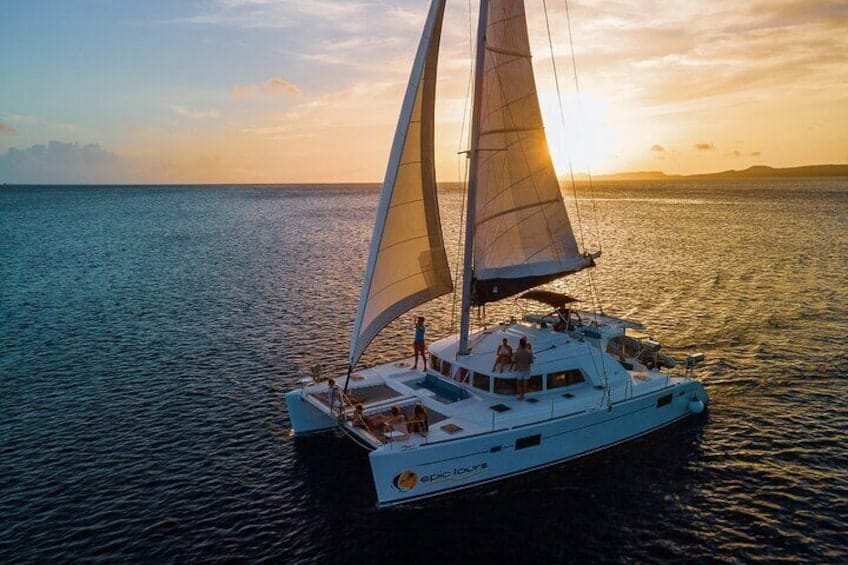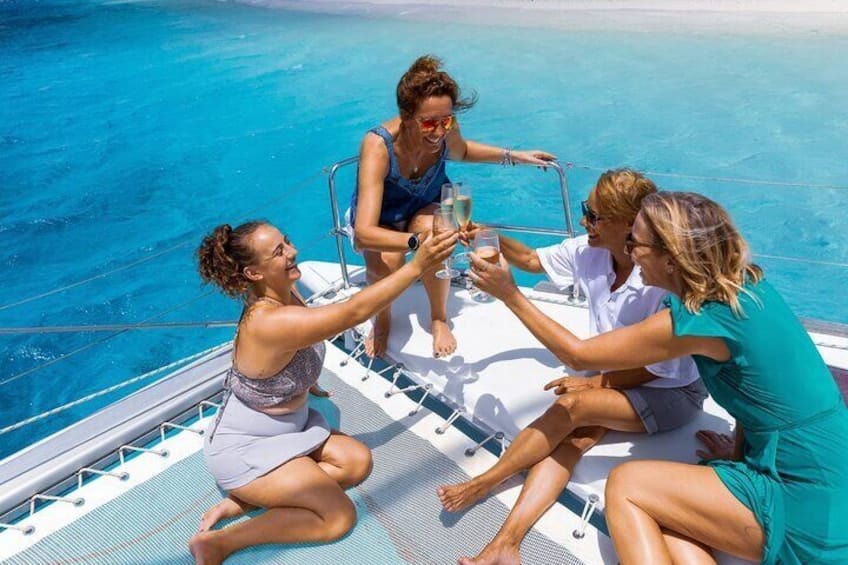Bonaire
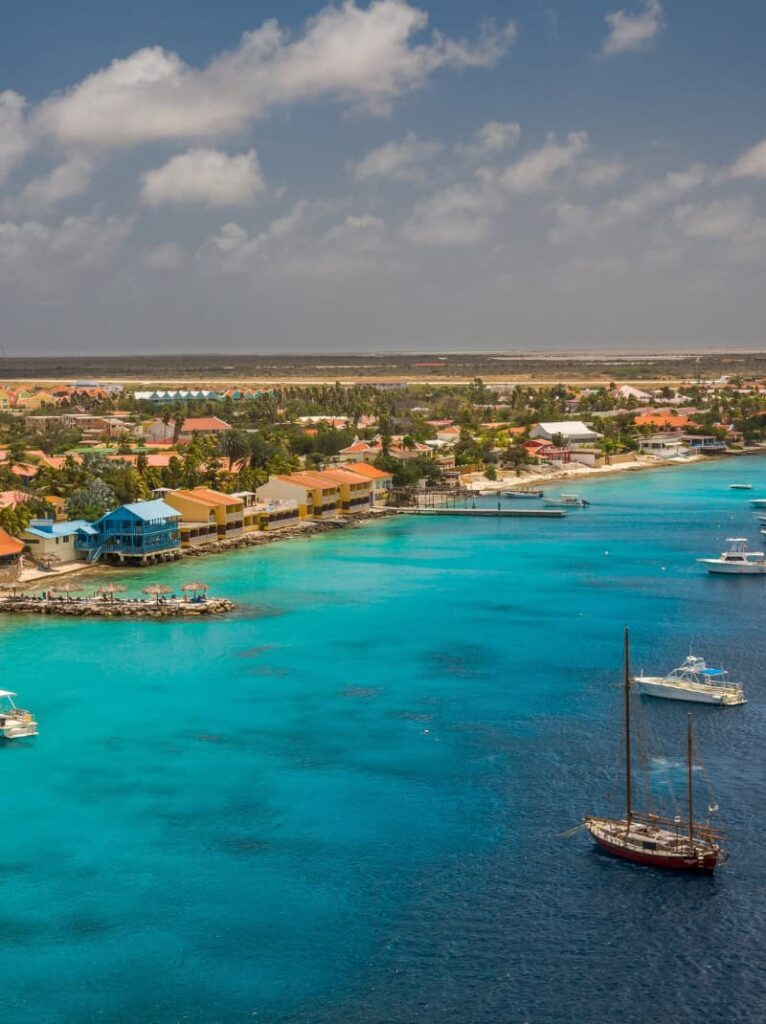
Welcome to Bonaire - pure, relaxed and adventurous
Dream away on pearly white beaches, warm trade winds and a laid-back island vibe. Aruba offers you the perfect blend of relaxation, culture and adventure.
From azure waters and colorful coral reefs to quiet mangroves and atmospheric villages: Bonaire offers a unique blend of relaxation and experience. Whether you want to dive, hike, soak up culture or just enjoy the silence, this island can be discovered at your pace.
On this page you will find everything you need: from adventurous excursions and private tours to practical travel information, frequently asked questions and options for customized trips. Get inspired and experience Bonaire the way you want it – authentic, personal and full of unforgettable moments.
Activities in Bonaire
Information about Bonaire
About Bonaire
About Bonaire
Together with Aruba and Curaçao, this beautiful Caribbean island forms the well-known ABC Islands and is strategically located off the Venezuelan coast. At 288 square kilometers, Bonaire offers visitors a unique combination of pristine natural areas and spectacular marine life that attracts divers from all over the world.
The charming capital city of Kralendijk
The heart of Bonaire beats in Kralendijk, where colorful colonial architecture graces the harbor side and a lively atmosphere prevails. This picturesque capital offers tourists a perfect blend of local charm and modern amenities, ideal as a base for your Caribbean adventure.
Historic Rincon
In the northern part of the island lies Rincon, Bonaire’s oldest community that offers a fascinating glimpse into the island’s rich history. This authentic settlement tells the story of Bonaire’s cultural development through the ages.
Versatile island culture
With over 24,000 residents, Bonaire offers a warm, multilingual community where Papiamentu is the local language. As a visitor, you will find that English, Spanish and Dutch are also widely spoken, making communication easy. The island culture reflects a fascinating blend of African, European and Latin American traditions.
Diving paradise par excellence
For underwater enthusiasts, Bonaire is a true paradise. The Bonaire National Marine Park protects the pristine underwater world and makes the island one of the best diving destinations in the world. The clear waters and diverse marine life make for unforgettable diving experiences for beginners and advanced divers alike.
What you need to know when going to Bonaire
STINAPA nature fund
STINAPA is an independent non-profit organization dedicated to protecting and managing Bonaire’s unique natural areas. This foundation works hard to preserve and restore the island’s rich biodiversity. As a visitor to Bonaire, you make a mandatory contribution to this nature foundation, directly helping to preserve the beautiful nature you come to admire.
Mandatory island tax for visitors
All travelers to Bonaire pay an island tax that contributes to local infrastructure and services. For adults and children 13 and older, this fee is $75 USD, while children under 12 pay $10 USD. Preferably arrange this tax online starting a week before your departure – this will save you valuable time upon arrival. If you do want to pay at the airport, make sure your bank card works worldwide, as cash is not accepted.
Traveling with young travelers
The same passport requirement applies to child travelers as adults: a valid passport is required. Island tax must also be paid for the smallest vacationers. Are you traveling with minors without a partner? Then inform yourself in advance about what additional documents you will need to avoid delays at customs.
Paying on the island
The U.S. dollar is the standard currency of payment on Bonaire. European euros are accepted by almost no stores or restaurants. Local banks, however, can exchange your euros into dollars. With a Dutch bank card activated for worldwide use, you can withdraw U.S. dollars from any ATM.
Prepare for unexpected expenses by carrying sufficient financial cushion. Consider possible extra costs for flight delays or more expensive accommodations. Bring several payment options, such as multiple debit or credit cards. Don’t forget to activate your debit card for use outside Europe.
Mobile connection
Check in advance with your telecom provider about the rates for calling and Internet use outside the European Union. A special foreign package can be considerably cheaper than the standard rates.
Emergency services
Bonaire falls under the Caribbean Netherlands, so there is no Dutch diplomatic representation on the island. In case of problems, contact the local emergency services.
Contact with local emergency services
Need immediate assistance during your stay in Bonaire? Reach the local emergency services through these numbers:
General emergency line: 911 and 112
Diving accident with decompression sickness: 133
Climate and seasons
Bonaire’s perfect tropical climate
As a tourist, you can enjoy a wonderfully consistent climate on Bonaire. Daytime temperatures fluctuate pleasantly around 30°C, while nights remain mild at around 28°C. Unlike Europe, this Caribbean paradise has no traditional seasons with large temperature differences.
Dry season versus rainy season
Bonaire has two main periods: the dry months from March to October and the rainy period from October to March. Don’t worry about the “rainy season” – this is nothing compared to Dutch autumn weather! The island experiences only about 6 days of real precipitation per year. During the rainy season, showers fall mainly in the early morning or evening, and you will see more clouds providing welcome shade. A rain suit or umbrella is definitely not needed in your suitcase!
Sun protection is essential
The period between noon and 3 p.m. brings the brightest solar radiation. Many local stores therefore close during these hot afternoon hours. Actively seek shade during this time, as the tropical sun is much more intense than you are used to from Holland. Quick burns lurk without adequate protection.
Be careful when choosing sunscreen: standard sun protection products can seriously damage the fragile coral reef. Just one drop can damage a soccer field of coral! Fortunately, local dive centers sell reef-friendly sunscreen that protects your skin without harming the underwater world.
September: the warmest month
September is known as the hottest time of year on Bonaire. During hurricane season in the United States and other Caribbean islands, wind and clouds are pulled away from Bonaire. This can lead to a stifling wind chill of as much as 45°C. Even locals struggle with this extreme heat, making the island rhythm even slower than usual.
Storms and weather conditions
Although Bonaire is outside the hurricane belt, the island can sometimes experience mild tropical storms during the rainy season. However, these remain limited and rarely threaten your vacation plans.
(Public) transportation
Your gateway to paradise
Queen Beatrix International Airport welcomes you to the beautiful island of Aruba. Strategically located near the capital city of Oranjestad, this modern airport is the perfect start to your tropical vacation.
Excellent international connections
As a visitor, you can enjoy direct flights from numerous destinations. The airport maintains regular connections to the Netherlands and other European cities, making it easy for Dutch tourists to travel to this Caribbean gem. Frequent flights are also available from North America, South America and other Caribbean islands.
Tribute to Dutch history
The airport bears the name of former Queen Beatrix, symbolizing the special bond between Aruba and the Netherlands. This naming reflects the rich history and cultural connection that characterizes the island.
The heart of Aruba’s tourism
For vacationers, the airport serves as the main gateway to Aruba’s white beaches, crystal clear waters and welcoming culture. Its strategic location makes it easy to quickly travel to your hotel or resort and begin your island adventure.
Bonaire's airport
Flamingo International Airport: your gateway to Bonaire
Bonaire’s international airport welcomes visitors with its compact and uncluttered layout. With only one terminal for arrivals and departures, you won’t experience confusing mazes here – everything is within easy reach. This simple layout ensures that your trip goes smoothly from landing to departure.
Last-minute purchases before departure
Just before you pass customs control, the airport still offers plenty of opportunities to complete your trip. Don’t forget to buy that perfect memento at the souvenir stores, or enjoy a final meal at the airport restaurant while reminiscing about your Bonaire adventure.
Check-in times you need to know
Recommended arrival times vary depending on your destination:
Regional flights: Plan to be at the airport 1.5 hours before departure when traveling to nearby islands.
European destinations: Allow 2 hours extra time for flights to Europe to quietly go through all procedures.
North American flights: For travel to the United States or Canada, we recommend arriving 3 hours in advance.
Discover the magic of Bonaire
This beautiful island has much to offer visitors. The clear Caribbean waters beckon divers and snorkelers with their vibrant underwater world full of tropical fish and intact coral formations. Nature lovers will find a paradise of flamingos, iguanas and unique landscapes. For those seeking rest and relaxation, Bonaire offers the perfect escape from the daily hustle and bustle, while culture lovers can enjoy the rich history and local traditions of this special island.
Events
Discover Bonaire’s vibrant event life
Bonaire offers a rich array of activities and celebrations throughout the year that are perfect for visitors who want to experience the local culture. From lively Latin nights to traditional festivals – there is always something going on on this beautiful Caribbean island.
Weekly events not to be missed
Each week, Bonaire offers regular events enjoyed by locals and tourists alike. On Thursday, get your hips swinging at Latin night at Cuba Compagnie, where Caribbean rhythms take you to a world of passion and dance. Friday is the perfect day to relax at Ocean Oasis, where live music and a cozy happy hour provide the ideal atmosphere.
The weekend concludes with a spectacular dance party at Hangout Beach Bar on Sunday, where you can dance under the stars. Monday offers a more intimate experience with an atmospheric bonfire at Delfins Beach Resort – a magical end to the weekend open to all island visitors.
Special Markets and Local Experiences.
When a cruise ship enters port, Wilhelminaplein transforms into a lively cruise market full of local treasures and souvenirs. This is a great opportunity to bring home unique memories of your Bonaire trip.
Highly recommended is Marshe di Rincon, an authentic Market that takes place every last Tuesday of the month in the historic village of Rincon. Here you can taste the true essence of Bonaire through local delicacies, admire artwork by islanders and enjoy traditional music that reflects the Caribbean soul of the island.
Holidays and cultural highlights
| Date | Event | Details |
|---|---|---|
| January 1 | New Year’s Day | Stores closed, restaurants open |
| February/March | Carnival | Biggest party of the year with parades and shows |
| March 31 – April 1 | Easter | Unique beach camping tradition for all residents |
| April 27 | King’s Day | Island-wide festivities with stalls and music |
| April 30 | Dia di Rincon | Cultural village festival in the oldest village |
| September 6 | Flag Day | “Bonaire day” in honor of discovery in 1499 |
| October | Regatta | International sailing regatta with week of activities |
| December 15 | Kingdom Day | National holiday |
| December 25-26 | Christmas | Cozy Caribbean-style Christmas celebration |
| December 31 | New Year’s Eve | Spectacular farewell to the year |
Bonaire’s magical carnival
Carnival is without a doubt the highlight of the year in Bonaire. This multi-day celebration in February or March turns the entire island upside down with colorful parades, exciting mass elections and an endless program of cultural activities. As a visitor, you will be swept into a world of music, dance and pure joy that perfectly captures the Caribbean zest for life.
Easter: a unique island tradition
During the Easter weekend, Bonaire experiences a special tradition where camping is allowed on the beach – the only time of the year it is allowed. The entire island flocks to the coast for a communal celebration that gives tourists a unique look at Bonaire’s close-knit community.
Practical information for visitors
During public holidays, most stores and businesses are closed, but cozy restaurants and bars remain open to welcome visitors. This gives you the perfect opportunity to discover local gastronomy while the locals celebrate their holidays.
Bonaire is ready to surprise you with its unique blend of relaxation and culture, where azure waters and colorful coral reefs set the stage for unforgettable memories. Whether you are looking for underwater adventure, cultural exploration or just want to enjoy the laid-back Caribbean atmosphere – this island paradise has something special in store for every traveler.
History
The origin of Bonaire’s name
The beautiful island of Bonaire owes its name to the original Caquetio people, who called it “Bonay” – a term that meant “lowland. Over the centuries, this name has undergone several transformations: from Bonay to Bojnaj under Spanish influence, to eventually the name Bonaire as we know it today.
Dutch colonization and the West India Company
The year 1636 marked a turning point in Bonaire’s history when Dutch naval forces took over the island from the Spanish. The island was then ruled by the powerful West India Company (WIC), which made it an important trading post. The WIC developed the local economy by focusing on several sectors: timber production, corn farming and salt mining were the backbone of the island economy.
For labor-intensive plantations, the WIC brought people from Africa, often in slave ships that tell tragic stories. These ships carried entire families, with a striking number of children making the dangerous crossing – sometimes they made up as much as 30 percent of all passengers. In the records of the time, two children were often registered as one adult.
The first families and their legacy
A historic moment occurred in 1744 when the first family names of African origin were officially recorded in the island registers. These families laid the foundations for Bonaire’s rich cultural diversity that visitors can still experience today.
In parallel, European families also settled on the island in the second half of the 18th century, making their own contributions to Bonaire’s unique multicultural identity.
From trading company to Dutch colony
After the breakup of the West India Company in 1791, Bonaire received a new status as a direct Dutch colony. This transition ushered in a new chapter for the island and its inhabitants.
Historic surnames on Bonaire
| Period | Origin | Examples of surnames |
|---|---|---|
| 1744 | African families | Anthony, Coffie, Domacasse, French, Gulu, Janga, Wanga |
| Late 18th century | European families | Evertsz, Thielman, Daal, Thode, Pourier, Neuman, de Jongh |
These historic surnames are still reflected in Bonaire’s community and testify to the island’s rich cultural heritage.
Traditional food and drink
Discover the authentic flavors of Bonaire
Bonaire’s cuisine tells the story of an island where cultures converge. African traditions, Caribbean influences and Dutch elements have combined to create a unique culinary identity that every visitor must taste.
Main dishes you must try
Stobá forms the basis of many Bonairean meals. These savory stews are cooked slowly until all the flavors meld together perfectly. Be sure to try the Kabritu Stoba with tender goat meat, Galina Stoba with fresh chicken, or the surprising Papaya Stoba with sweet papaya as the main ingredient.
Sopi dishes are perfect comfort food for hot days. From the rich Sopi di Karni with beef to the adventurous Sopi di Yuana with iguana, and the unique Sopi di Kadushi made from cactus – each soup has its own character.
Yambo is a celebration of flavors in one bowl. This dish combines okra with cured meat, fresh fish, cheese, shrimp and karko (local shellfish) into a delicious mixture.
Local snacks and street food
No visit to Bonaire is complete without tasting Pastechi. These crispy patties come with all kinds of fillings – from fresh fish and meat to cheese and ham. They are perfect as a quick lunch or snack.
Palito offers a local twist on the hot dog, while Johnny Cake – a golden brown fried pie – is ideal for breakfast. Antillean croquettes are firmer than their Dutch cousins and brimming with flavor.
Sweet temptations
Bonaire’s desserts reflect the island’s tropical bounty. Bolo (cake) comes in many varieties, while Tèrt with coconut or plums is a local favorite. The Repa di Pampuna (pumpkin pancake) offers a unique taste experience.
For sweet lovers, there are Lèter di Pinda (sugared almonds), Kokada (grated coconut candy) and Koi Lechi (sweet milk candy) – all perfect with a cup of coffee.
Refreshing local beverages
The tropical climate has led to refreshing drinks that are perfect for island life. Awa di Lamunchi (llama lemonade) and Awa di Tamarin (tamarind drink) offer natural cooling, while Chukulati di Pinda (peanut chocolate milk) is a rich, comforting option.
| Category | Court | Main ingredient | Flavor Profile |
|---|---|---|---|
| Main Dishes | Kabritu Stoba | Goat meat | Savory, spicy |
| Main Dishes | Sopi di Kadushi | Cactus | Mild, unique |
| Main courses | Yambo | Okra mix | Creamy, complex |
| Snacks | Pastechi | Various fillings | Crunchy, savory |
| Snacks | Johnny Cake | Flour, butter | Golden brown, firm |
| Desserts | Kokada | Grated coconut | Sweet, tropical |
| Desserts | Repa di Pampuna | Pumpkin | Sweet, spicy |
| Beverages | Awa di Lamunchi | Lamunchi | Sour, refreshing |
| Beverages | Chukulati di Peanut | Peanuts | Rich, creamy |
This culinary journey through Bonaire shows how the island has transformed its diverse heritage into a cuisine that feels both familiar and exotic. Every bite tells a story of cultures living harmoniously together on this beautiful Caribbean island.
Meaning of the flag
The meaning of Bonairian star flag
The hexagonal star on Bonaire’s flag tells the story of the island itself. Each point of this star represents one of the six historical settlements that formed the basis of present-day Bonaire: Antriol, Nikiboko, Tera Cora, Nort di Saliña, Playa and Rincon.
From historic cores to modern capital
Over the years, the population grew and development expanded. Five of these original communities gradually merged to form what is now the vibrant capital of Kralendijk. Only Rincon, the oldest village on the island, retained its unique character and still lies as an independent community in the northern part of Bonaire.
New neighborhoods for modern residents
As Bonaire developed, new residential areas arose to meet the growing need for housing:
Republic and Santa Barbara can be found tucked behind Kralendijk, beautifully situated against the hills and built on the area of the former Nort di Saliña. Sabadeco is an exclusive coastal neighborhood stretching behind Santa Barbara, while Belnem – named after the famous singer Harry Belafonte – lies beyond the airport toward the impressive salt pans.
Overview of Bonaire’s residential areas
| Area | Type | Location | Details |
|---|---|---|---|
| Kralendijk | Capital city | Central-west | Combination of 5 original cores |
| Rincon | Historic village | North Bonaire | Oldest settlement on the island |
| Republic | Modern district | Behind Kralendijk | Located against the hills |
| Santa Barbara | Residential area | Behind Kralendijk | Former Nort di Saliña area |
| Sabadeco | Luxury district | Coastal | Exclusive homes by the sea |
| Belnem | Newer district | Direction of salt flats | Named after Harry Belafonte |
This geographical development shows how Bonaire has grown from six small communities to a modern island that respects its rich history while looking forward to the future.
Our promise for your travel experience
More than travel: experience, develop and grow
Blue Bird is not just about vacationing, but about experiences that enrich you. Our trips give you the chance to really get to know other cultures and come back with a broader view of the world.
Access to unique experiences worldwide
From local meetings to exclusive tours, we select only the most special and authentic experiences. Think foreign weddings, milestone trips, study trips and business inspiration experiences.
Personal, engaged and culturally aware
We believe in travel with depth. That’s why we work with local partners, provide culturally respectful experiences and personally guide you every step of the way.
Your journey, just the way you want it
Whether you dream of a private snorkeling tour, a surprise trip for a special occasion or just want to be completely unburdened, we will arrange it! Together, we’ll put together a unique experience that perfectly suits your needs. Personalized, flexible and organized to perfection.
